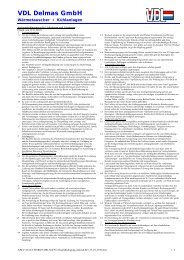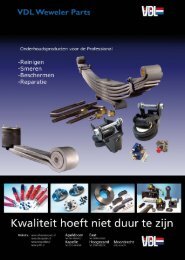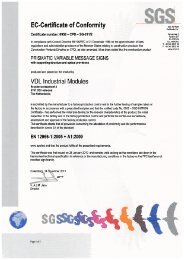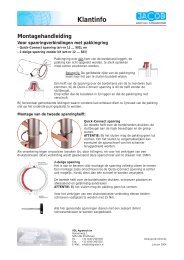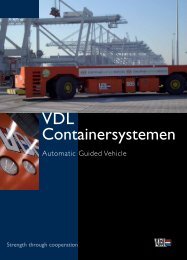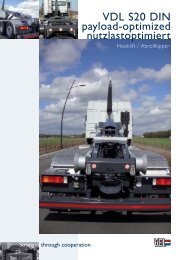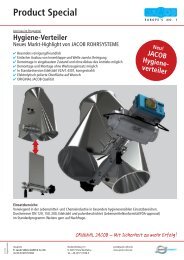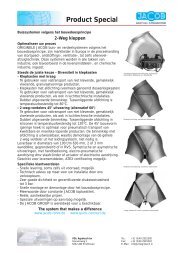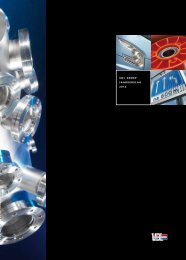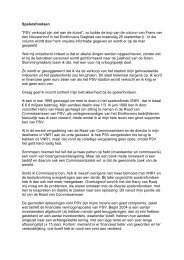Annual report 2012 - VDL
Annual report 2012 - VDL
Annual report 2012 - VDL
You also want an ePaper? Increase the reach of your titles
YUMPU automatically turns print PDFs into web optimized ePapers that Google loves.
Valuation principles for the balance sheet<br />
Intangible fixed assets<br />
Intangible fixed assets relate to the costs of goodwill at the time of take-over. Goodwill is valued at the difference between the<br />
acquisition price and the share in the net asset value of the acquired companies, less accumulated depreciation and extraordinary<br />
capital reductions. The depreciation period is 10 years and starts from the commencement of the financial year in which the<br />
goodwill costs originated. Negative goodwill is listed under statutory reserves.<br />
Tangible fixed assets<br />
Company land and buildings are valued at the current appraised value, being the value by private treaty with continued use,<br />
with costs for the purchaser’s account, less depreciation and taking into account the expected lifespan of the assets in question.<br />
A deferred tax liability of 15% is taken into account in the revaluation of buildings. The remaining tangible fixed assets are<br />
valued at purchase price less depreciation, taking the expected useful life into account. The expected life per category is:<br />
Company buildings:<br />
20 - 33 years<br />
Renovations and facilities:<br />
5 - 20 years<br />
Plant and machinery:<br />
5 - 10 years<br />
Other fixed operating assets:<br />
5 - 7 years<br />
Investments during the year under review are written off pro rata temporis.<br />
Financial fixed assets<br />
Shareholdings are valued at their share in the net asset value. The value of assets, liabilities and profit of shareholdings in which<br />
the company has a controlling interest are determined in accordance with the principles applicable to these annual accounts.<br />
Claims on group companies and minority interests and other financial fixed assets are valued at nominal value or market value, if<br />
lower. Also included under financial fixed assets, due to the available forward offset of losses, is part of the deferred tax credit that<br />
cannot be set off against deferred tax obligations. Expectations are that this deferred tax credit will not be settled in the near<br />
future. For the applicable valuation principles, refer to the paragraph on “deferred tax credits and obligations”.<br />
Stocks and work in hand<br />
Stocks of raw materials and consumables are valued at fixed transfer prices based on the last known purchase price plus<br />
various surcharges. If necessary, a provision for non-saleability is established. Work in hand (including semi-finished products<br />
and development costs of new products) is valued on the basis of the overall cost price of the materials processed and hours<br />
worked, less a provision for obsolete stock and expected losses. Invoiced instalments are deducted. Stocks of finished products<br />
and commodities are valued at the cost price or fixed transfer price, based on the last known purchase price plus various<br />
surcharges, minus the provision considered necessary for nonsaleability.<br />
Accounts receivable<br />
Receivables, including taxes, prepayments and accrued income, are valued at face value less a necessary provision for bad<br />
debts. Included under receivables, due to the available forward offset of losses, is part of the deferred tax credit that cannot be<br />
set off against deferred tax obligations. Expectations are that this deferred tax credit will be settled in the near future.<br />
59




